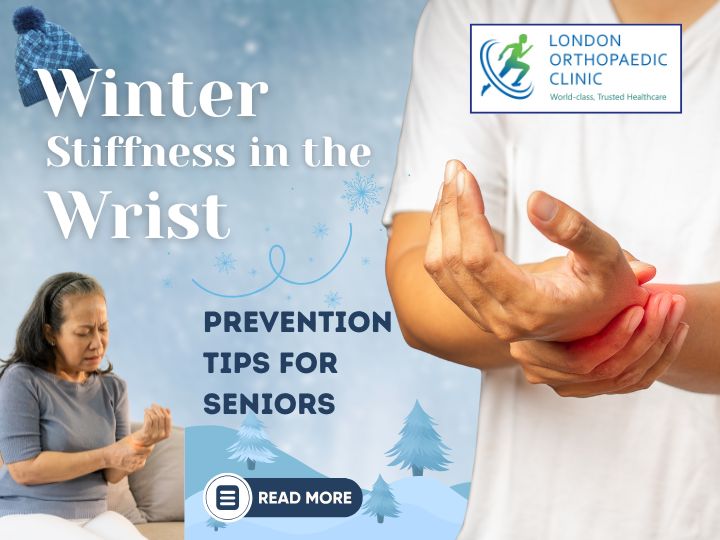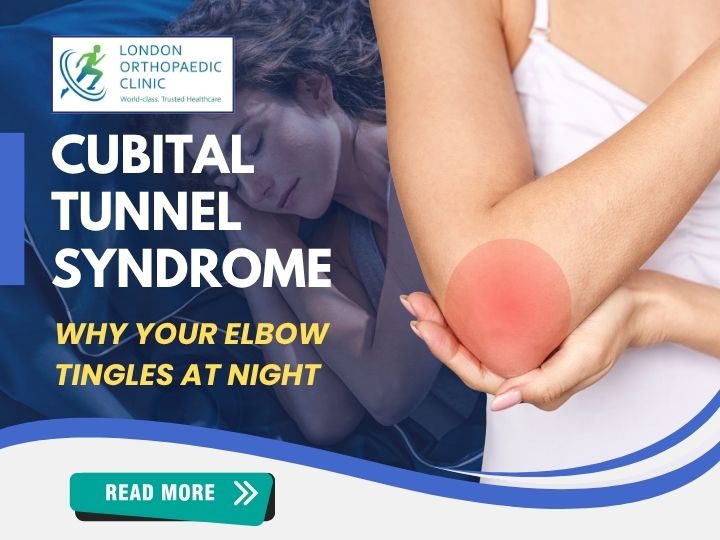Have you ever jammed your finger so hard that it looked out of place?
That could be a dislocated finger joint, and it’s more common than you think — especially among sportspeople, children, and older adults with weak joints.
This blog explains in detail everything you need to know about finger dislocations, including first aid at home, red flags, and when it’s time to consult an orthopaedic expert like Dr. Vishal Sahni — a renowned Shoulder, Elbow, and Wrist specialist in Nagpur with over two decades of experience in India and the UK.

What is a Dislocated Finger Joint?
A dislocated finger joint occurs when the bones in your finger are forced out of their normal position. It mostly happens at the joints — knuckles or near the fingertips — and can be extremely painful.
Fingers are made up of three bones and two joints (except the thumb, which has two bones and one joint). When a sudden impact pushes one of the bones out of alignment, it leads to dislocation.
Common Causes of Finger Dislocation
Understanding the cause helps in preventing future injuries. Finger dislocations are typically caused by:
- Sports injuries (common in cricket, volleyball, basketball, kabaddi)
- Accidental falls (where the person lands on an outstretched hand)
- Jamming the finger in a door or drawer
- Direct trauma or punch to a hard surface
- Overextending or twisting the finger beyond its normal range
For senior citizens, even a mild force can result in dislocation due to weakened ligaments or underlying arthritis.
How to Identify a Dislocated Finger?
Here are the typical signs and symptoms of a finger joint dislocation:
- Visible deformity or bent appearance
- Severe pain and tenderness
- Swelling and bruising
- Limited or no movement
- Numbness or tingling (if nerves are compressed)
- The finger may appear shortened or crooked
Important Note: Never try to force a dislocated finger back into position on your own. Improper handling can worsen the injury.
Immediate First Aid for Dislocated Finger
If you or someone around you dislocates a finger, here’s what to do immediately:
1. Do Not Try to Pull or Straighten It
Do not attempt to pop the finger back. This could damage blood vessels, nerves, or surrounding tissues.
2. Immobilise the Finger
Use a splint, pen, pencil, or ice cream stick to keep the finger in its current position. Tape it to a neighbouring finger (buddy strapping) if no splint is available.
3. Apply Ice Packs
Wrap some ice in a clean cloth and apply to reduce swelling and numb the pain. Avoid direct contact with skin.
4. Elevate the Hand
Keep the hand raised above heart level to reduce blood flow and swelling.
5. Head to an Orthopaedic Doctor Immediately
Visit a specialist in hand injuries like Dr. Vishal Sahni at London Orthopaedic Clinic, Nagpur, who has extensive experience in treating wrist and finger dislocations.
Why You Should Not Delay Medical Attention
A dislocated finger may seem like a minor injury but delaying treatment can lead to:
- Permanent deformity
- Joint instability
- Stiffness and loss of motion
- Nerve or blood vessel damage
- Post-traumatic arthritis
Timely evaluation by an Orthopaedic Surgeon ensures proper alignment, healing, and function restoration.
Diagnosis of Finger Dislocation
When you visit the clinic, here’s what typically happens:
Clinical Examination
Dr. Vishal Sahni will examine the finger’s shape, movement, swelling, and sensation.
X-rays
Essential to determine the type of dislocation, any associated fractures, and ensure no bones are trapped (interposed).
Other Imaging
In rare cases, an MRI may be advised if there’s suspected ligament or tendon damage.
Treatment Options for Dislocated Finger
Treatment depends on how severe the dislocation is and whether any fractures or ligament injuries are present.
1. Closed Reduction
This is a non-surgical method where the doctor gently manipulates the bones back into position. A local anaesthetic may be given to reduce pain.
2. Immobilisation
After reduction, the finger is splinted or buddy-taped for a few weeks to allow healing. Regular follow-ups ensure proper alignment is maintained.
3. Surgical Treatment
Surgery may be required in the following cases:
- Repeated dislocations
- Ligament or tendon rupture
- Dislocation with fracture
- Joint instability even after reduction
Dr. Vishal Sahni is skilled in advanced hand and wrist surgeries and ensures minimal invasive procedures wherever possible.
Recovery Timeline: What to Expect
Recovery depends on the severity of dislocation and whether surgery was involved.
- Simple dislocation: 3–6 weeks
- Return to sports: After 6–8 weeks with physiotherapy
- Post-surgery healing: May take 8–12 weeks
Dr. Vishal Sahni will recommend hand therapy and specific exercises to improve strength and motion post-recovery.
Can a Dislocated Finger Heal on Its Own?
No. A dislocated finger requires proper realignment. If left untreated, it can heal incorrectly, leading to:
- Limited movement
- Weak grip
- Arthritis
- Repeated injuries
Even if the pain seems manageable, always consult a qualified orthopaedic doctor.
What Makes London Orthopaedic Clinic Nagpur the Right Place?
At London Orthopaedic Clinic, under the expert care of Dr. Vishal Sahni, patients get access to:
- Personalised treatment plans
- Modern diagnostic tools
- Advanced surgical and non-surgical care
- Compassionate, patient-focused approach
Dr. Sahni’s 24+ years of experience in shoulder, elbow, wrist, and hand conditions makes him the preferred choice in Nagpur for both local patients and referrals.
How to Prevent Finger Dislocations?
Some finger injuries can be prevented with the following tips:
- 🧤 Use protective gear while playing contact sports
- 📏 Practice proper technique in activities like weightlifting, cricket, kabaddi, etc.
- 💪🏼 Strengthen finger and wrist muscles through grip exercises
- 🚫 Avoid high-risk habits like punching walls or opening jars with force
- 🧓🏼 If you’re elderly, ensure safe home conditions to prevent falls
Final Words: Don’t Take Finger Dislocations Lightly
Finger joints may be small, but their function is huge in daily life. From writing and typing to eating and lifting — we use them constantly. A dislocated finger joint can disrupt this balance and cause long-term issues if not treated early.
Trust the expertise of Dr. Vishal Sahni, a highly experienced Orthopaedic Doctor in Nagpur, who brings global knowledge and compassionate care under one roof. Whether it’s shoulder, elbow, wrist, or finger injuries, your joint health is in safe hands at the London Orthopaedic Clinic, Dhantoli, Nagpur.
Book Appointment:
London Orthopaedic Clinic, Nagpur
Dr. Vishal Sahni – MBBS, MS (Orthopaedics), Fellowship in Shoulder & Upper Limb (UK)
Dhantoli, Nagpur
Call: +91 9529552938
Website: www.londonorthopaedicclinicngp.com
Frequently Asked Questions (FAQs)
What are the symptoms of a dislocated finger joint?
A dislocated finger usually looks bent or crooked, with sudden sharp pain, swelling, and inability to move the finger. You may also feel numbness or tingling if nerves are involved.
Can a dislocated finger be fixed without surgery?
Yes, many dislocations can be treated with closed reduction (realignment without surgery), followed by splinting or buddy taping. But if there’s a fracture or ligament damage, surgery might be needed. Only a specialist like Dr. Vishal Sahni can decide the best course after X-ray evaluation.
Is it safe to pop a dislocated finger back at home?
No. Never try to pop or pull a dislocated finger by yourself. It can cause permanent damage to nerves, blood vessels, or ligaments. Always seek help from an orthopaedic doctor immediately.
How long does it take to heal from a finger dislocation?
For a simple dislocation, it usually takes about 3 to 6 weeks. But for complicated injuries or after surgery, it may take 8 to 12 weeks with physiotherapy for complete recovery.
What should I do immediately after dislocating a finger?
You should:
- Immobilise the finger using a splint or tape
- Apply ice to reduce swelling
- Keep the hand elevated
- Visit an orthopaedic specialist like Dr. Vishal Sahni at London Orthopaedic Clinic, Nagpur
Can I move my finger if it’s dislocated?
Usually, no. A dislocated finger will have very limited movement and will be extremely painful to touch or bend. Forcing it to move may worsen the injury.
Which doctor should I consult for a dislocated finger in Nagpur?
You should consult Dr. Vishal Sahni, an experienced orthopaedic surgeon specialising in shoulder, elbow, wrist, and hand injuries at London Orthopaedic Clinic, Dhantoli, Nagpur.
Can finger dislocations happen again?
Yes. If the ligaments become weak or if the injury was not treated properly, repeat dislocations are possible. Surgical correction might be required in such cases to stabilise the joint.
Do children also get finger dislocations?
Yes. Children can also dislocate their finger joints due to falls, rough play, or sports. Prompt diagnosis and expert treatment are necessary to avoid long-term complications.
Will I get arthritis after a finger dislocation?
If a dislocation is not treated properly or is left for too long, it can lead to post-traumatic arthritis in the joint. This is why it is important to consult an expert orthopaedic surgeon like Dr. Vishal Sahni without delay.
-
Winter Stiffness in the Wrist: Prevention Tips for Seniors
When winter arrives, many seniors experience a familiar discomfort — stiffness and pain in their wrist joints. This seasonal stiffness often becomes worse in the cold mornings or after long periods of inactivity. It can make daily activities like cooking, writing, or even holding a cup of tea uncomfortable. At London Orthopedic Clinic, Nagpur, under…
-
Cubital Tunnel Syndrome: Why Your Elbow Tingles at Night
Have you ever experienced a strange tingling or numbness in your ring and little fingers, especially at night or when your elbow is bent for a long time? If yes, you might be suffering from Cubital Tunnel Syndrome — a common but often overlooked cause of night-time elbow discomfort. This article explains why your elbow…
-
Wrist Pain from Excessive Smartphone Use: Causes, Symptoms, and Expert Treatment in Nagpur
In today’s digital age, our smartphones have become an inseparable part of our lives. From scrolling through social media to replying to messages, managing work, and even shopping, we spend hours every day holding our phones. But this constant activity comes with a hidden cost — wrist pain from excessive smartphone use. At the London…


